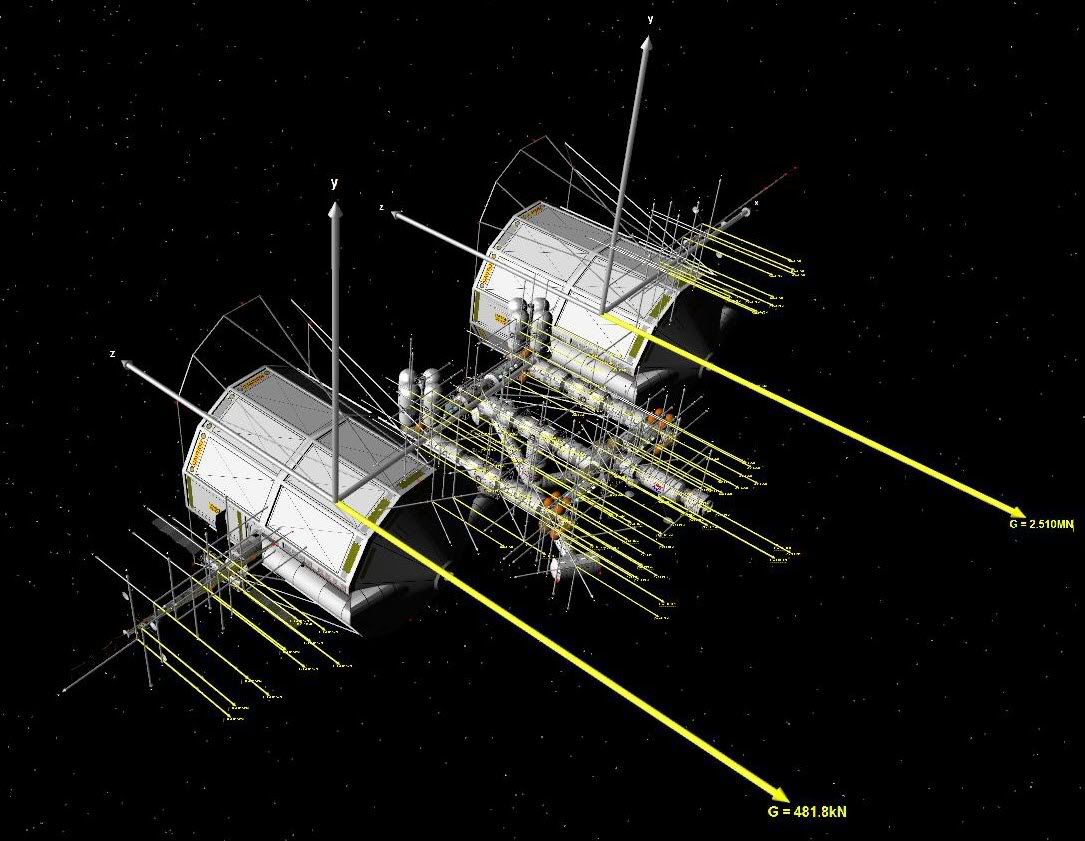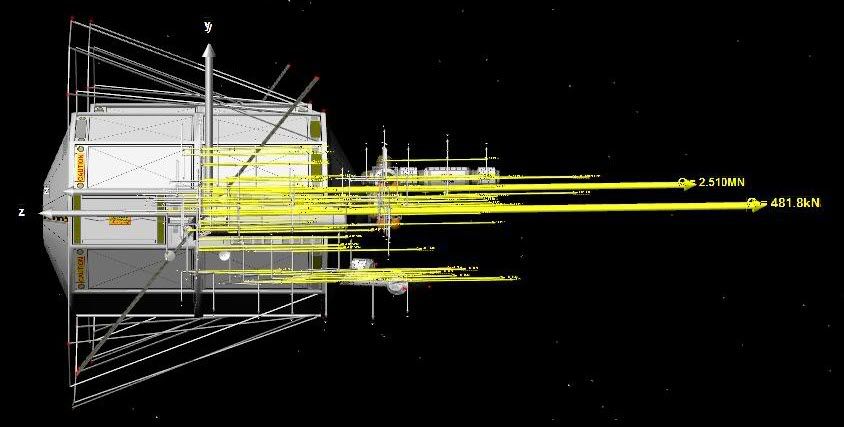hey all,
Figured this was the better place to pose this question as it has to do with the physics of mass in space/orbiter.
I've recently spent hours of fun building a new station using Greg Burch's great Building Building Blocks 4.0/4.1 add-on. All told the station consists of of over 80 building blocks (vessels) including 2 of his older Airdock2's. I'm not at home at the mo so I can't give specifics on it's total mass or even throw up a snazzy pic, but I've noticed she does like to "tumble" around in orbit.
I've adjusted certain settings in the .ini like rcs thrust etc.. to make it so it's pretty easy to killrot when another ship wants to dock, but I doubt these settings are realistic.
My question has to do with reducing the "tumble" naturally based on orbit altitude and eccentricity.
In short, would something tumble less or more in Earth orbit if it was in higher orbit or lower orbit. I've tried Alts from 250km to 10000 and she still likes to tumble way more than most other vessels I see (e.g. ISS).
I would have assumed: the higher the mass of an object and the lower the orbit alt, the less the tumble, but I just don't know.
In fact I don't even know if or how much the ISS tumbles around today or if it does how they compensate for it.
Any thoughts would be appreciated and thanks in advance.
regards
XonE32
Figured this was the better place to pose this question as it has to do with the physics of mass in space/orbiter.
I've recently spent hours of fun building a new station using Greg Burch's great Building Building Blocks 4.0/4.1 add-on. All told the station consists of of over 80 building blocks (vessels) including 2 of his older Airdock2's. I'm not at home at the mo so I can't give specifics on it's total mass or even throw up a snazzy pic, but I've noticed she does like to "tumble" around in orbit.
I've adjusted certain settings in the .ini like rcs thrust etc.. to make it so it's pretty easy to killrot when another ship wants to dock, but I doubt these settings are realistic.
My question has to do with reducing the "tumble" naturally based on orbit altitude and eccentricity.
In short, would something tumble less or more in Earth orbit if it was in higher orbit or lower orbit. I've tried Alts from 250km to 10000 and she still likes to tumble way more than most other vessels I see (e.g. ISS).
I would have assumed: the higher the mass of an object and the lower the orbit alt, the less the tumble, but I just don't know.
In fact I don't even know if or how much the ISS tumbles around today or if it does how they compensate for it.
Any thoughts would be appreciated and thanks in advance.
regards
XonE32



